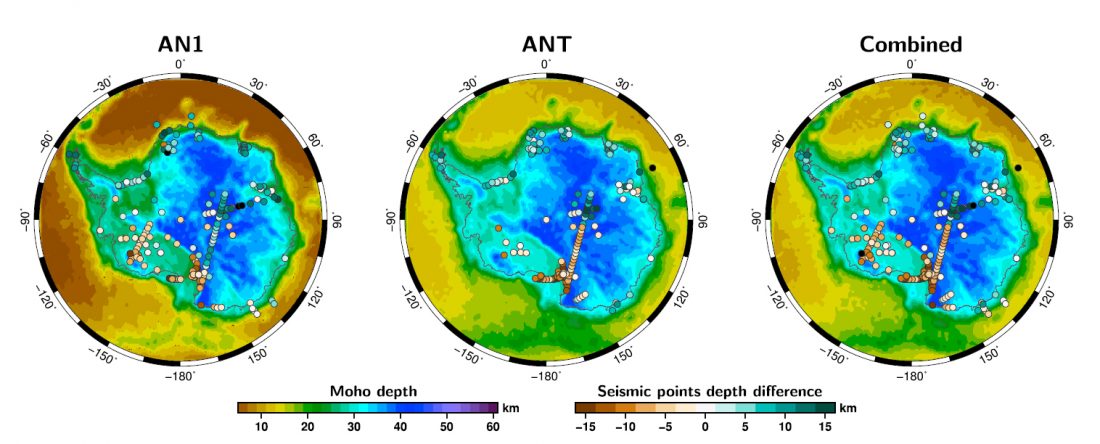Ice sheet dynamics is strongly related to basal melting and geothermal heat flow, which in turn is influenced by crustal thickness variations. On the other hand, the lithosphere of the Antarctic continent is still poorly known.
Different datasets (airborne gravity and magnetic measurements, seismological campaigns) exist but mostly suffer from limited spatial coverage over large areas that affect various fields of Antarctic research (from Moho depth estimation to glacial isostatic adjustment). Additional geophysical information can help reconcile the different existing datasets.
EO data are particularly suitable thanks to their almost global uniform coverage and the consistent long-wavelength (>150km) information, mainly influenced by deep subsurface structures.
A recently published study is looking at inversion of Antarctic Moho depth derived from satellite gravity data from the GOCO05s model and comparing it with existing seismological and Airy-isostatic Moho depth models.
The full results of the study are reported in: F. Pappa, J. Ebbing, F. Ferraccioli (2019). Moho Depths of Antarctica: Comparison of Seismic, Gravity, and Isostatic Results, Geochemistry, Geophysics, Geosystems, 20, 1629-1645 https://doi.org/10.1029/2018GC008111
Featured image : Resulting Moho depth maps from the inversion for different seismic depth point sets. The coloured circles indicate the differences in depth between the seismic constraint and the inverted depth.

